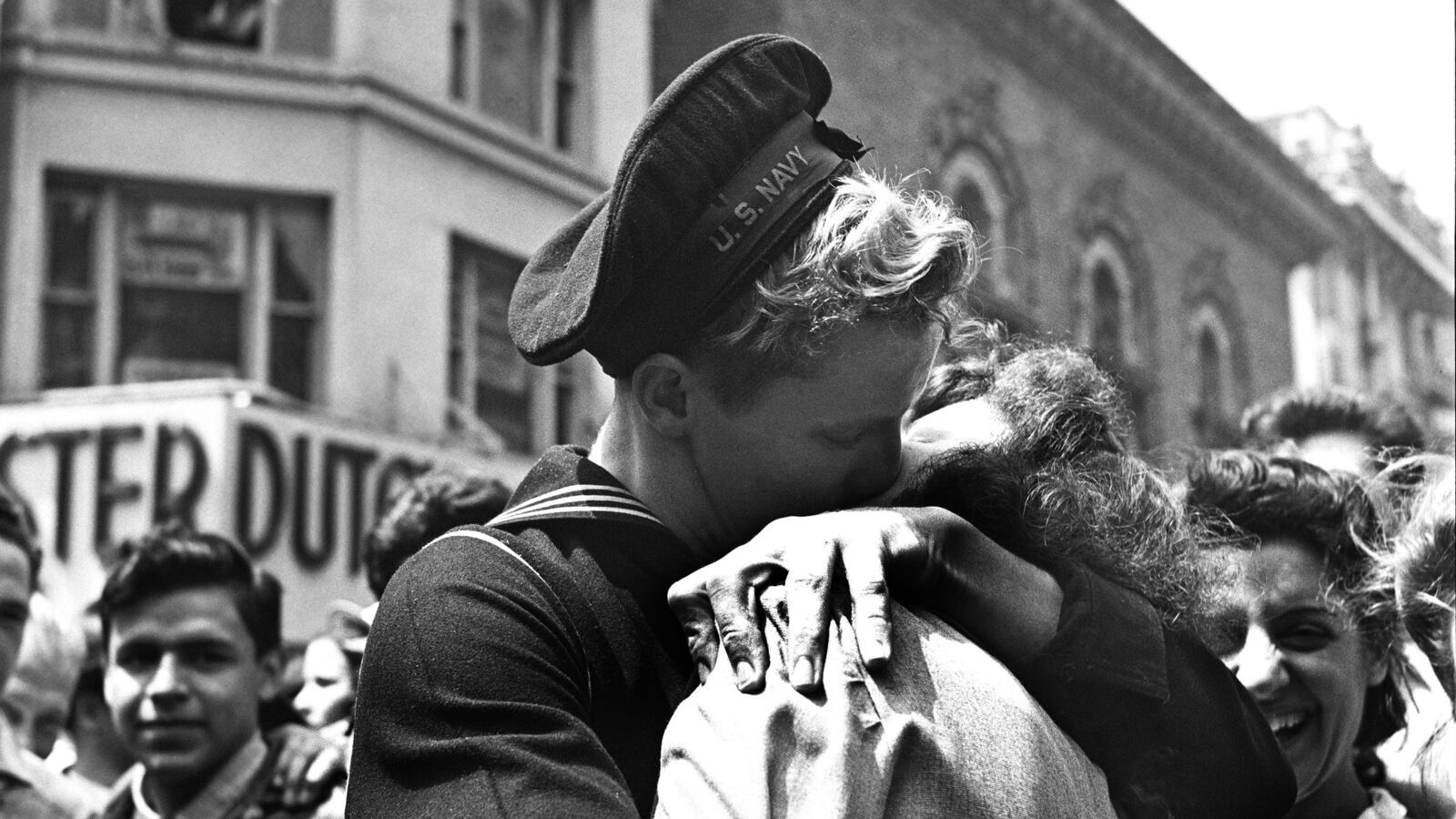Several years ago, driving down the Atlantic coast to Georgia, I looked out my window to find that I was being paced by a woman on a quad. I must have done a double-take, like the Navy pilot who sees a UFO outside his cockpit. Not because a quad along a Southern highway is an uncommon sight but because this woman also had a baby in her lap. And a tallboy. Protective headgear was conspicuous by its absence. I wouldn’t like to embellish, but she was probably smoking a cigarette—hell, why not make it a joint? Whenever I tell this story to my fellow Northeasterners, they assume I was aghast at the primitive childrearing customs of Herda Hadda Holler, but what really went through my mind is: That’s a mom who knows how to have fun.
“[C]onflict is the active ingredient in fun,” writes John Beckman in his adventuresome new history, American Fun: Four Centuries of Joyous Revolt. “Risk, transgression, mockery, rebellion—these are the revving motors of fun.” Reminded of that revving motor down in Dixie, I have to concur. Beckman, an English professor at the United States Naval Academy, makes a powerful case that fun may be good but should always be at least slightly less than clean. It is “too easily conflated with its sorry impostors, ‘entertainment,’ ‘recreation,’ and ‘leisure.’” Fun properly understood is active, participatory, and anarchic, “the joy of throwing your body into the mix, of raising your voice in the public sphere, and of putting your reputation at risk.”
How, you may well ask, can fun be “properly understood”? It can’t, of course. Much of the fun of Beckman’s book lies is his willingness to confidently assert a pet definition at a time when most people are reluctant to make the most banal observation without citing some dubious study to back it up. Beckman never lectures the reader about brain activity or reward centers; his descriptions of Americans cutting loose, haphazardly selected from the historical record, speak for themselves. If he makes little effort to prove that his definition is uniquely applicable to the United States, this seems less like an oversight than a deliberate nose-thumbing at the kind of reader humorless enough to care. Kirkus Reviews: “His conclusions, moreover, slide dangerously close to exceptionalist rhetoric.” Dangerously?
In his “dangerous” flirtation with exceptionalism, Beckman even likens American fun to the Mississippi River: “American fun’s river has been strengthened and muddied by major tributaries along the way.” These are “the commercial, playful, and radically political,” and they “pour nutrients, pollutants, and sheer life-force into the great American gulf—which is to say, into the citizenry.” Though he devotes a chapter and more to the “Barnumization” or commercialization of fun, he allows that even the profit motive ultimately promotes fun for fun’s sake and fun with a transformative purpose. Fun begets fun. Whatever the context in which one is having fun, he is primed to have it in another. The quintessentially American lesson he learns is never to be joyless.
“Jollity and gloom were contending for an empire,” wrote Nathaniel Hawthorne in his story “The May-Pole of Merry Mount.” The battleground, Beckman tells us, was Puritan New England, where one Thomas Morton, “a son of the Elizabethan age, with its free-spirited politics and quick-witted hedonism,” attempted to establish a “New English Canaan” that he christened Merry Mount. Its members were renegade bondservants, who prospered by trade with the Indians and then toasted their good luck and freedom with a May Day celebration rowdy and Indian-friendly enough to invite the ire of Plymouth and Myles Standish. Morton was captured and deported to England, and Merry Mount’s Maypole was chopped down. Yet the memory of the Colony’s debauched, egalitarian spirit endures in Hawthorne’s tale.
From Morton’s May Day Party, Beckman takes us to an event not commonly considered for its festive side, the Boston Tea Party. “Boston harbor a tea-pot tonight!” roared a leather dressed named Adam Collson, as patriots disguised as Indians, “flaunting their rude native identity in the face of colonial power,” performed our formative act of gleeful vandalism. Contrasting the Tea Party with the grisly violence of the French Revolution, Beckman writes that “[i]ts strange admixture of Puritan restraint, Enlightenment ideals, and dangerous jolts of social upheaval would resonate with Americans for centuries to come.” In its playfulness, this trial run for revolution set the tone for what was to follow. There would be violence, but it would not be violence primarily that characterized the nation borne out of it.
America has had its share of violent political protest, but its radicals have also frequently been restrained, patient, and fun-loving enough to rely on spectacle and mockery to make their points. Among the descendants of the Sons of Liberty, Beckman argues, are Ken Kesey and his Merry Pranksters; the San Francisco Mime Troupe and the Diggers; Abbie Hoffman and the Yippies. Kesey’s “own psychedelic Merry Mount, in a redwood forest outside . . . La Honda” hosted parties as improbable as Thomas Morton’s, with LSD-addled Pranksters and Hells Angels (and ultimately cops) taking the place of bondservants and Indians. Whether there was a coherent political agenda in all this, it was as striking an affirmation of personal liberty as one will find in our annals—which is agenda enough.
As Beckman is quick to note, the radical fun of the 1960s and 1970s was largely a white and middle-class phenomenon. Most of the apolitical revelry described in American Fun, the kind that made life better or even just bearable, was the work of considerably more marginal Americans. Slaves’ Pinkster and Election Day parties and the brawling (and, oddly, fanatical theatergoing) of New York City’s Bowery “b’hoys and g’hals” were of a piece. Dancing and violence were closely related ways of blowing off steam, whether in Lower Manhattan, in the Wild West, or in the Los Angeles of the Zoot Suit Riots. In the Jazz Age and during the Harlem Renaissance, women and African-Americans made cultural and social inroads while contributing their spirit of sheer exuberance to the national mood.
When Beckman arrives closer to our present, the face of fun looks about as different as it could from the bondservants of Merry Mount, but the project of self-liberation remains fundamentally unchanged. Beckman toasts the DIY ethic underpinning the fun of the 1970s and 1980s. There were those South Bronx kids for whom breakdancing and rapping became alternatives to the city’s roiling violence. The Los Angeles Z-Boys made the treacherous Pacific Ocean Park their surfing paradise before going on to invent skateboarding as we know it. Punk and hardcore were tools for having fun while resisting middle-class respectability. This was creative fun for its own sake. Nobody was in it for the money.
Beckman is wary of entrepreneurs who “sell it back to the people.” P. T. Barnum may have been “a large-scale prankster in the spirit of the Sons of Liberty,” but “his agenda was increasingly commercial.” No true lover of riot, he was a voice of the temperance movement; more significantly, Barnum was an early adopter of advertising and marketing methods that did more than flirt with fraud. Barnum’s legacy is evident, as far as Beckman is concerned, whenever the authentic is co-opted by marketers, or—as in the case of video games—turned into something passive and private. “American democracy,” he writes, “hasn’t been fortified by passive citizens . . . but by active, resistive, DIY citizens who take pleasure in agency and group definition.”
American Fun invites two major criticisms. One is that it promotes, perhaps unwittingly, the soothing but silly fantasy that our elites are incapable of having real fun. Movies, despite themselves being the product of an elite, often traffic in this fantasy; it is impossible to grow up on John Hughes or Caddyshack and not come away with the firm conviction that only the underdog enjoys himself. The other, related criticism is that the book barely hints at the role of friendship in fun. Its focus is on types, whether slaves or Flappers or like-minded political radicals, at the expense of those who merely grow up together, sharing gossip and anecdotes, swimming holes and watering holes. Live in any small town and you will see that, yes, even cops, schoolteachers, and Elks have genuine fun.
Yet jollity and gloom are still at war in our censorious age. Fraternities are treated as the rough equivalent of CIA black sites, and binge-drinking has been defined down, it seems, to so much as thinking about alcoholic beverages twice in one sitting. Our national pastime of ferreting out sexists and racists—which might mean some flyover-country bumpkin in an insensitive Halloween costume, or a pop star dressed like a Mikado chorus member—reveals a tedious obsession with inventing and enforcing rules. For nose-pulling and brawling we have substituted ritual apologies. Even the language of the new Puritans, full of such anemic adjectives as “troubling” and “divisive,” reveals a disdain for American rough-and-tumble. Beckman’s account raises a sobering question, the kind that makes the reader crave a drink: Are we having fun anymore?






